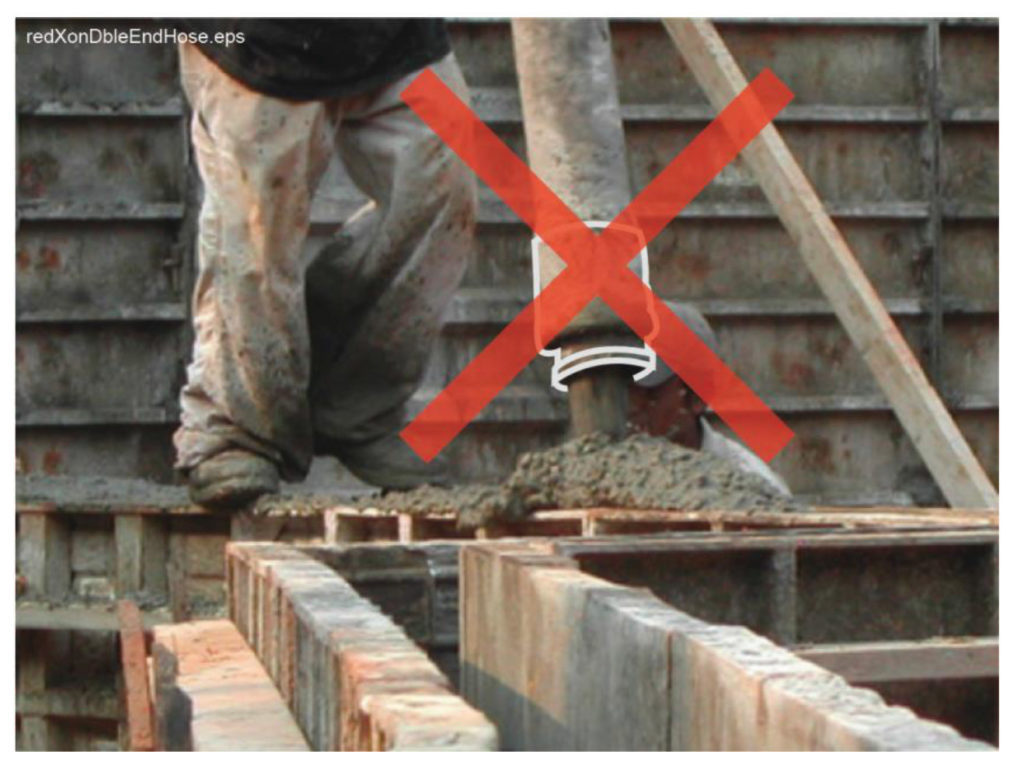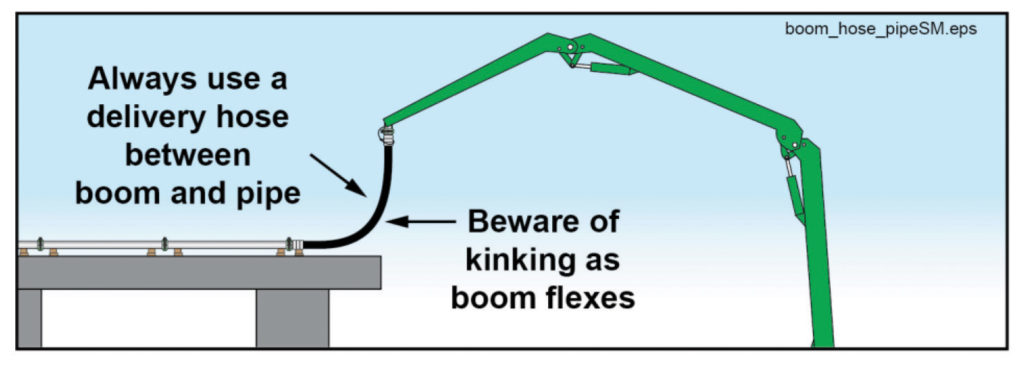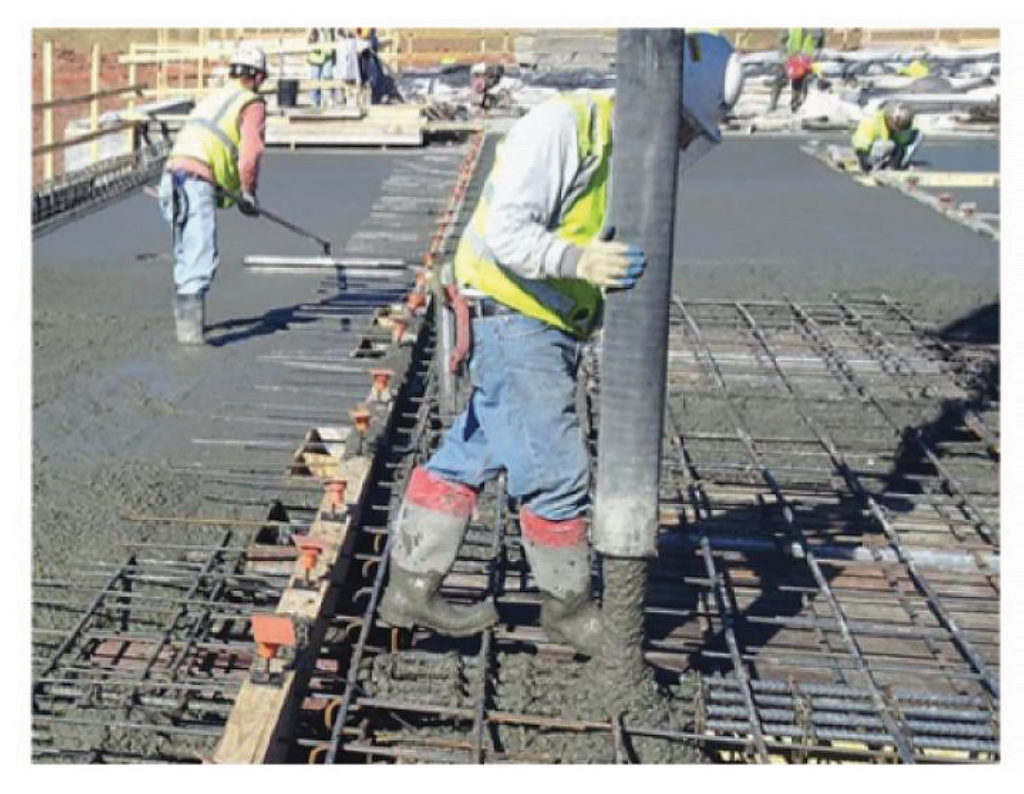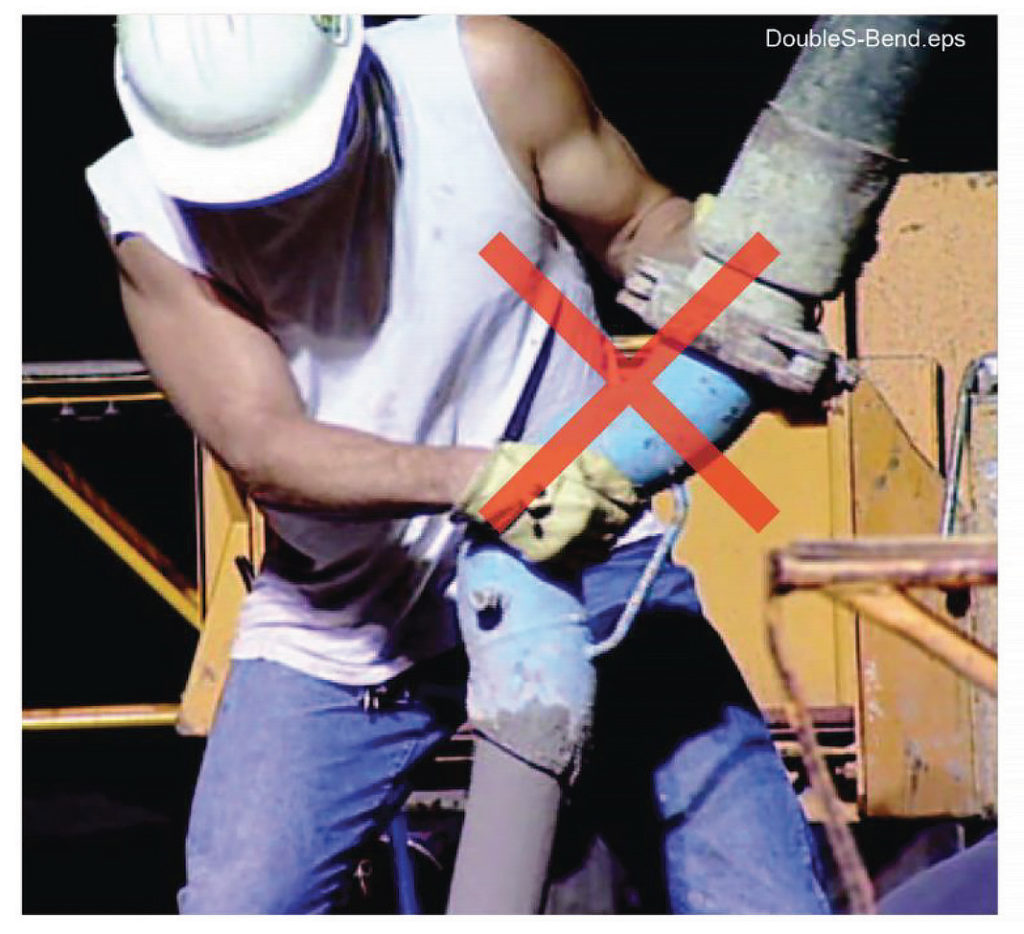Hoses are not all the same

Concrete delivery hoses with two ends have different purposes than concrete delivery hoses with one end. See Figure 1.

Hoses defined.
Double-ended concrete delivery hoses increase the potential for serious personal injury when used as an end hose. A double-ended concrete delivery hose has mass attached to the end of the hose, multiplies momentum, and has the potential to cause serious injury or even death to persons in its path, should the hose move unexpectedly or whip as a result of the release of trapped air. It is imperative that you only use a single-ended end hose at the discharge of the boom and on the discharge-end of lay-down placing line. (See Figure 2).

A double-ended concrete delivery hose improperly being used as an end hose.
Double-ended concrete delivery hoses have a place. There are situations where a double-ended concrete delivery hose is required. Here are some examples: If you will be laying out pipeline in addition to the boom, a double-ended concrete delivery hose must be used to connect the boom to the pipeline; this allows the boom to move independently of the pipeline. Without this hose, the boom could be damaged. (See Figure 3). Double-ended concrete delivery hoses are required when something must be attached to the line, yet it must remain flexible, like using a lay-down line with more than one hose after the pipe for distribution of the concrete, or for attaching the nozzle at the end of a shotcrete hose.

There are valid reasons to use a double-ended concrete delivery hose.
Keep the single-ended end hose on the end.
As pipe and hose are removed, a single-ended end hose must be used as the end hose at all times. This means that as you are removing hoses, you have to remove the next-to-last hose, and then slide the single-ended end hose in to hook up to the system that remains.
(See Figure 3). Once the last pipe is removed, the double-ended concrete delivery hose must be removed from the boom, and a single-ended end hose moved into its place.
According to ASME B30.27, paragraph 27-3.1.3.3.1(r), not using a concrete delivery hose as an end hose is an operator responsibility. ASME B30.27, Material Placement Systems, is the American National Standard for pumping and concrete conveyor safety.

Be sure the discharge end is equipped with an end hose, not a delivery hose.

A double S-bend in use on a job, causing a needless hazard to the hose-person.
No place to attach banned accessories.
Eliminating the double-ended end hose makes a ‘ram’s horn’ or ‘double S-Bend’ device impossible to attach. (See Figure 5). These devices are also not acceptable or recommended. They add even more mass and multiply movement to a greater degree than a delivery hose alone. The ACPA has informed the DOT of the states that requires their use, (for prevention of air loss) that these devices are hazardous and must not be used. See the ACPA Safety Bulletin Double S-Bend/Rams Horn ©2009 ACPA, all rights reserved.







